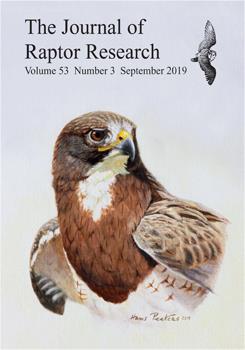American Kestrels (Falco sparverius) are North America's most abundant falcon, but they are declining throughout much of their range. Studies of nesting success are common, but far less is known about kestrels during migration and on the wintering grounds. We studied kestrels wintering along county roadways in South Texas. We trapped and color-marked 65 kestrels during October through December in 2014 and 2015 and searched for marked individuals once per week using a spotting scope, until birds started departing from the wintering grounds. We also searched for returning kestrels from September to March, 2015–2016 and 2016–2017. We used the Cormack–Jolly–Seber (CJS) models in Program MARK to estimate apparent survival, and we estimated two metrics of site fidelity as well as a spatial metric of site fidelity. We estimated territory size for individuals with ≥10 locations using the maximum linear distance between locations. We estimated winter survival (20 wk) as 67.1 ± 7.1% for kestrels in the winter they were marked and 84.4 ± 6.3% for returning birds. The 2-yr average apparent winter site fidelity was 27.8% for males and 50.2% for females, and the 2-yr average adjusted winter site fidelity was 41.7% for males and 65.7% for females. Linear average territory size ranged from 539 ± 34 m in Winter 3 to 738 ± 74 m in Winter 1. Our estimates of site fidelity are 12–15% greater than previously reported, and our linear winter territory sizes (pooled over 3 yr) were less than half the size of those previously reported for wintering American Kestrels. Small territories and high winter site fidelity suggest that South Texas agricultural areas are likely an important region for wintering kestrels.
How to translate text using browser tools
13 August 2019
Survival, Site Fidelity, and Territory Size of American Kestrels Wintering in an Agricultural Landscape of South Texas
Carter G. Crouch,
Robert H. Benson,
Leonard A. Brennan,
Eric D. Grahmann
ACCESS THE FULL ARTICLE

Journal of Raptor Research
Vol. 53 • No. 3
September 2019
Vol. 53 • No. 3
September 2019
American kestrel
apparent survival
Cormack-Jolly-Seber
Falco sparverius
site fidelity
Texas
winter ecology




